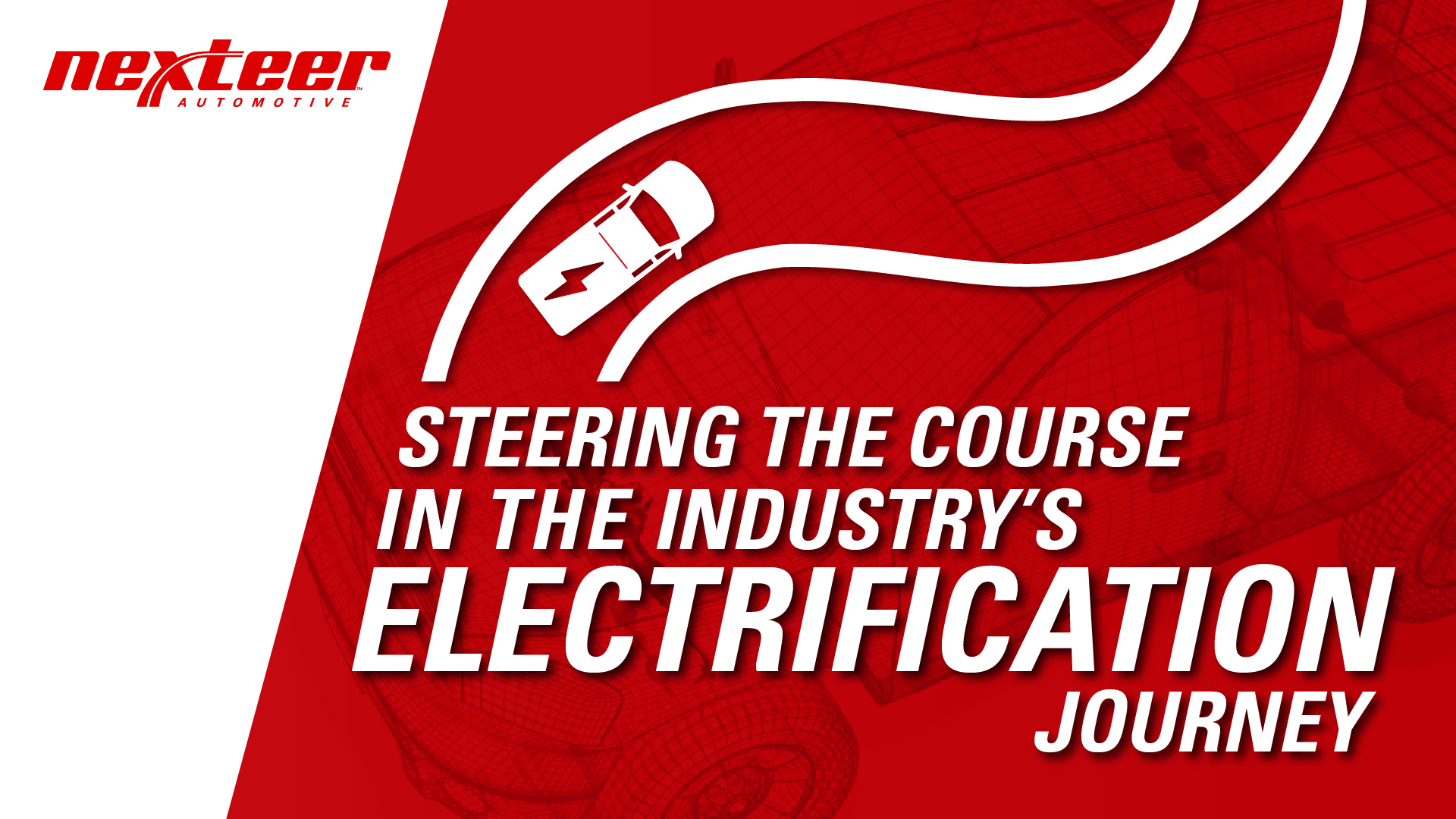Steering the Course in The Industry’s Electrification Journey
September 3, 2020

China, Europe, North America: Automotive OEMs are taking different routes in these markets to the same electrification destination. Along this journey, Nexteer is well-positioned to steer the course.
We’re seeing that EVs could be a key focus in some governments’ post-COVID19 stimulus plans. For example, China has shown its commitment to keeping plans for electric vehicles on track by extending subsidies and tax break policies for new energy vehicles (NEVs) by two years to 2022. Another key driver for electrification is CO2 legislation which remains strong in China and Europe. While the legislation is less stringent in the US, we see customers doubling-down on the electrification front – especially in the full-size truck and SUV market – as well as expanding hybrid product plans.
So while it’s clear that electrification is a growing, global megatrend – what opportunities does this present for an advanced steering specialist like Nexteer?
In a short answer: Many
Nexteer has a proven track record in electrification before electrification was even a megatrend. More than 20 years ago, Nexteer was one of the key players in the start of hydraulic-to-electric conversion of steering systems.
Beyond the hydraulic-to-electric conversion, our electric power steering (EPS) product line addresses needs for internal combustion engine (ICE) and the expansion of those platforms to EVs. For Nexteer, steering solutions for ICE and EV applications are similar. These similarities increase cost efficiency for our OEM customers, especially as many launch EVs as a subset of existing platforms.
With EVs, we see a trend of heavier vehicles due to the battery weight, which leads to higher steering loads. This is where our industry-leading, under-hood EPS systems, like Rack-Assist and Pinon-Assist EPS, shine because they can support the EV’s unique load requirements, as well as accommodate electrified variants of current ICE full-size trucks and SUVs.
Electrification & Full-Size Truck Market
A new frontier in the EV market is emerging within the full-sized truck segment. Nexteer is already the dominant provider of EPS solutions to the North America full-size truck market – with 9 out of 10 trucks currently featuring a Nexteer EPS system. This opportunity for Nexteer is further magnified as the truck market is the least COVID19 impacted vehicle segment according to IHS Markit.

For electric full-size trucks and SUVs, weight considerations become even more important. This is where our leadership in Rack-Assist EPS (REPS) comes in: REPS systems are designed for heavier vehicles to handle higher front-axle loads and optimize packaging space, making them ideal for electric trucks and SUVs. Our High Output (HO) EPS may also open a new conversion wave of hydraulic-to-electric power steering for heavy-duty trucks and medium-duty commercial vehicles.
As OEMs show increase interest in electrifying powertrains for full-size trucks and SUVs in North America, Nexteer’s EPS technology and leadership in the truck segment strongly position us to lead the electrification efforts in this area. For example, steering up to 24kN of load on a 12-volt electrical system would have been unachievable just a few years ago. Yet today, that capability exists with Nexteer’s HO EPS system. That’s why OEMs continue to turn to Nexteer as a partner of choice for steering technology as they announce electric versions of their trucks and larger vehicles.
In addition to our steering technologies playing a key role in the electrification journey, we’ll cover in future blog posts how our Driveline technologies solves unique challenges in EVs.
On a final note… Beyond our current product portfolio, Nexteer’s global R&D team is exploring new, exciting possibilities that may expand our own journey to the electrification destination.





